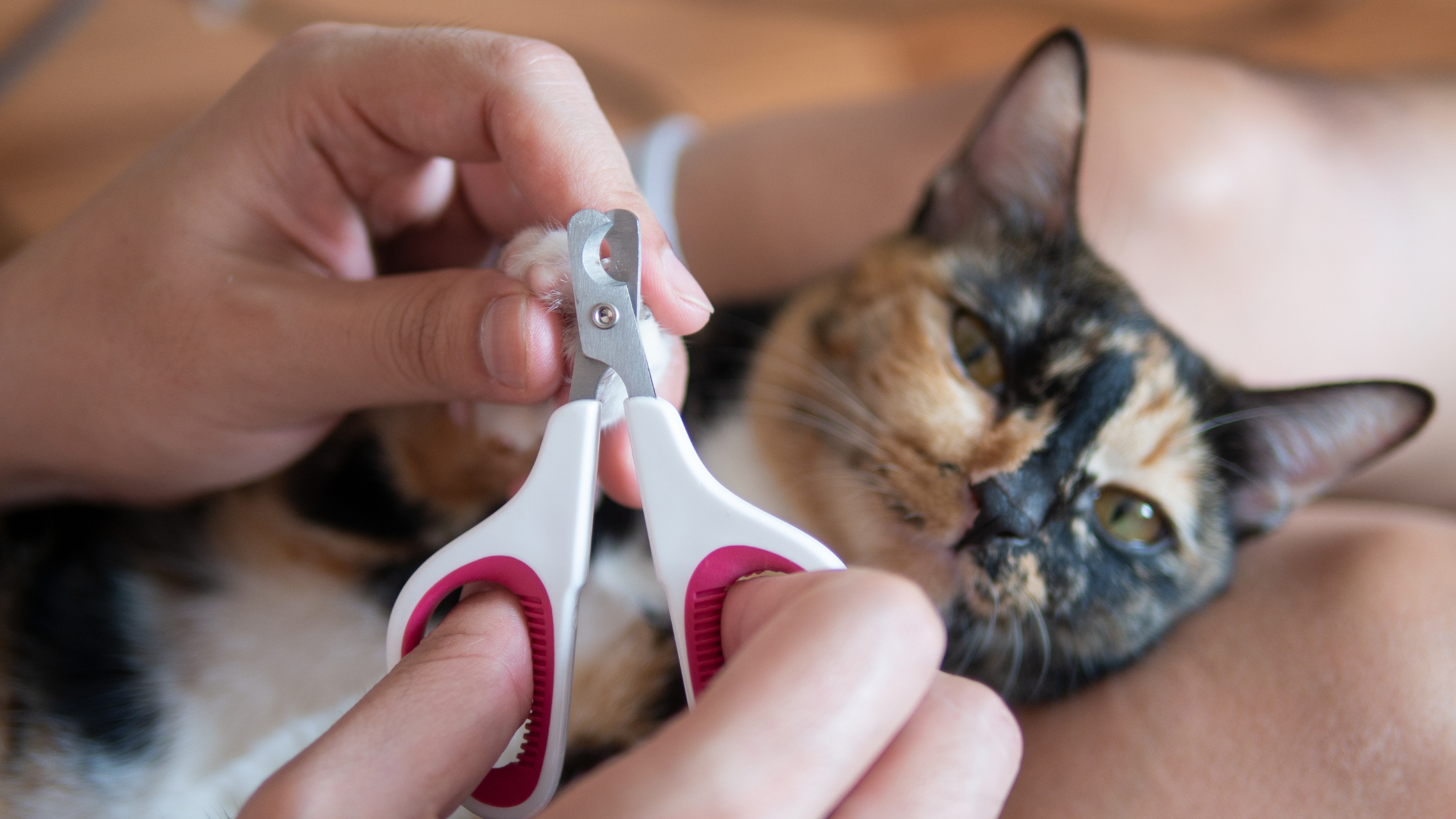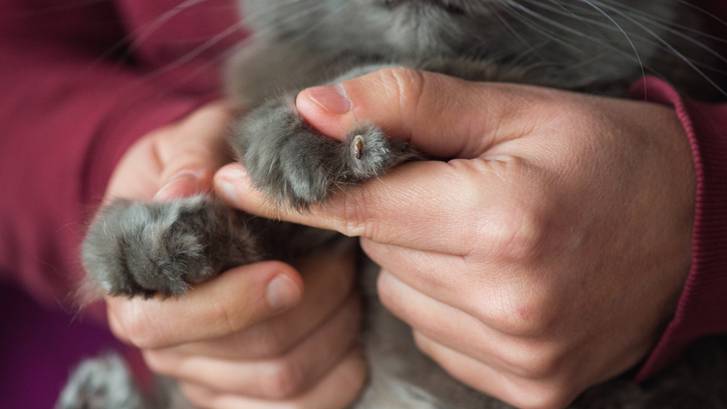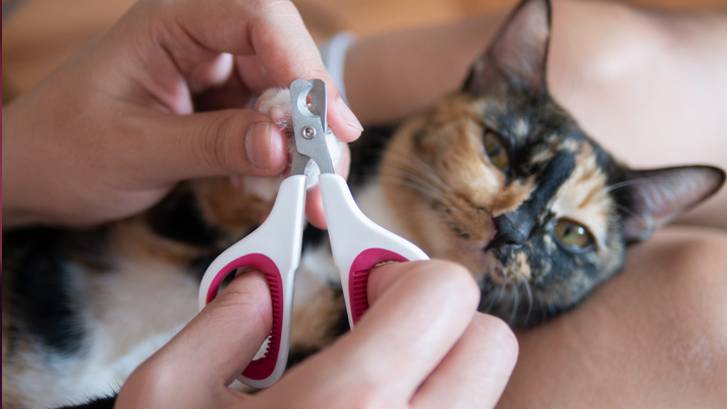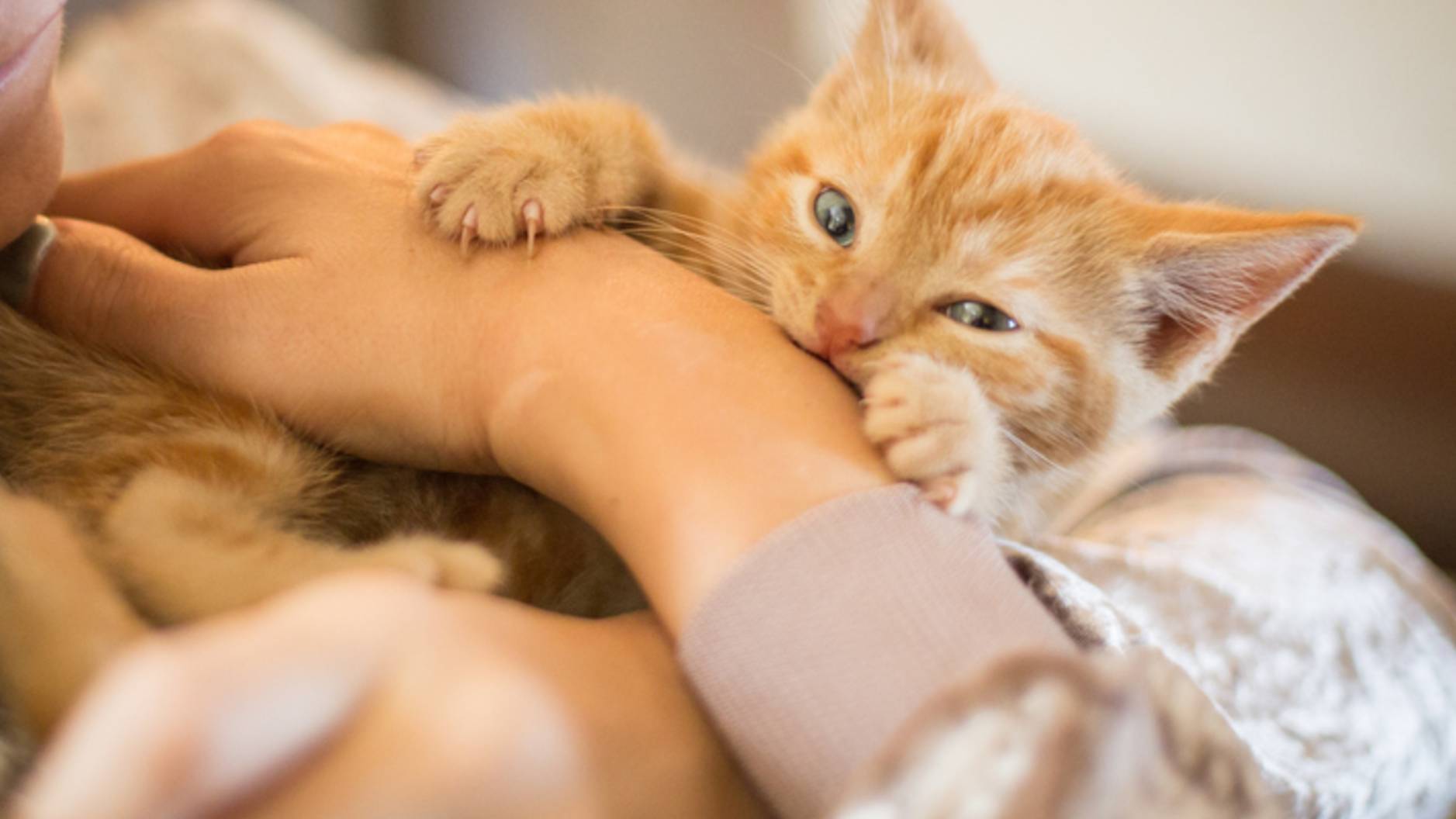
If you want to learn about cat nail clipping, then you’ve come to the right place. We understand that this task can feel a little intimidating, but once you know what you’re doing, it’s not as bad as you might think.
Before you get started, you’ll need some of the best cat nail clippers. These should be small enough for your cat’s nails and have a high-quality blade that’s free from rust. You might also want to learn about cat body language so you can read how your cat is feeling and predict how they might react.
Most cats will file their claws on the best cat scratching posts, but if they’re not able to do this due to arthritis or other conditions, they might need your helping hand. We asked expert vet Dr. Joanna Woodnutt for a step-by-step guide and how to tell when they need a trim.
Is it necessary to trim a cat's claws?
Whether a cat will benefit from a claw clipping depends a lot on the cat. Not all cats need their claws trimmed – a young, fit, and healthy cat with access outdoors will probably keep their claws trimmed naturally by using scratching posts. You might have been wondering, 'Why does my cat scratch the walls?'
In contrast, elderly cats can struggle to shed their claws and may be suffering from arthritis making them less likely to use scratching posts to keep their nails in tip-top shape. Indoor cats or cats with injuries that restrict their movement are likely to need their claws trimming, but it depends on the individual.
So how can you tell if your cat’s nails need trimming? If your cat will allow it, turn over their foot – the tips of their nails should be visible, but no more. You can gently apply pressure to the paw to see more of the nails – they should be sharp, and clear, with no loose bits or areas where the nail is shedding.
They certainly shouldn’t be approaching the pad of the foot or curling around on themselves – these are signs that your cat needs their claws trimmed urgently. If the claws have grown so long the sharp end is contacting the foot, the trim is best left to a professional – the pad beneath is likely to be sore and may need antibiotics.

When should I clip my cat's nails?
If your cat needs his claws clipping, it’s worth determining why. If it’s a one-off because they’ve been on house arrest then that’s one thing, but if they’re senior or an indoor-only cat, then it’s likely they’ll need their claws trimming regularly. It's one of the ways to protect furniture from pets.
It can take some trial-and-error to work out how often to clip your cat’s nails, but as a starting point you should check them every two weeks, and clip them if they appear long. You should also clip your cat’s claws if you notice them getting stuck in the carpet when they’re walking, and check them if you notice a limp.
How to cut cat nails (step-by-step)
Cutting your cat’s nails is easiest with an extra pair of hands, so try to enlist a friend to help. Don’t forget that cats can quickly lash out if they feel threatened – watch your cat’s body language carefully and, if in doubt, don’t proceed.
1. Get your cat used to the idea
Cats dislike surprises, so try not to spring a claw-clipping session on them. It’s not painful to have their claws clipped, but many cats will resist because it’s strange, and they don’t like being messed with.
Try to teach your kitten about nail clipping from a young age. Even with an adult cat, you can spend time slowly building up to a claw clipping by gently picking them up or playing with their feet.
2. Get your equipment together
Before you start, it’s best to get your equipment together. You don’t want to be frantically searching for your clippers whilst your cat is already restrained! You’ll need:
- Cat claw clippers (sharp!)
- Some treats
- A styptic pen or similar, in case the nail bleeds
- A towel, or method of restraining your cat
- Gently restrain your cat
Before you trim anything, you’ll need to pick a foot. Starting with the side nearest you, and beginning with the back foot is often the easiest. Whilst back claws often don’t need trimming as much as front ones, they’re further from your cat’s head. This allows you to gauge your cat’s reaction from a safer distance than the front paws.
Grasp the foot in your hand and gently apply pressure to the top of the foot and the pads – this should cause the claws to extend. You’ll want to continue applying this pressure, and this hand is also useful to control your cat’s foot and prevent it from moving too much when you’re cutting.

3. Decide where to cut
Look closely at your cat’s nails before you cut. You’ll see a see-through section – the nail – and, closer to the body, a pink center – the ‘quick’. This quick is pink because it’s the living part of the nail, containing blood vessels and nerves – avoid cutting this. Instead, you want to position your clippers to cut 3-4mm past the end of the quick.
4. Make the cut swiftly and surely
Hesitation can make this process uncomfortable for your cat and increase the chance of injury. Once you’re happy that you know where to cut, make the cut as smoothly and surely as you can.
Check the nail was cut in the right place, that no more needs to come off, and that it isn’t bleeding. If it is, you can apply a styptic pen to the area to stop the bleeding or call your vet for advice.
5. Continue trimming your cat’s nails
One down, but plenty more to go! Once you’ve finished the first nail, continue with the rest of that foot. Don’t forget to check any dewclaws your cat has – these are your cat’s ‘thumbs’ and are usually a couple of inches up the leg from the foot, meaning they’re easily missed.
Most cats only have front dewclaws, but some have back dewclaws and some even have two dewclaws on each foot, so check carefully to make sure you aren’t missing nails!
Difficult cats: How to cut a cat’s nails if they’re old, young, or stressed
Above are the instructions for a well-behaved, easy cat who lets you trim her nails – what about when things get a bit trickier?
A gentle approach is all that is needed to trim most cats’ nails. This means taking your time, doing only as much as your cat is comfortable with, and never being rough with your cat.
However, some cats simply won’t allow it, gentle or not. In this case, it’s best to leave cutting your cat’s nails to a professional – a vet or feline-friendly groomer – at first. They’ll be able to assess your cat and determine if anything can be safely done to calm them for future clips.

With senior cats, the process is much the same, but it’s important to be aware that the nail is generally in worse condition. Cats should shed the outside of their claw to keep a thin, sharp point, but this doesn’t always happen in senior cats. The claw can appear thicker, less see-through, and may be harder to cut.
Take extra care to trim these nails often, avoiding the quick. You can also ask your vet to trim them and show you how to help strip the outer layers off.
Kittens can be small and wriggly, and their claws are like needles! The most important thing about cutting a kitten’s nails is that you don’t make it stressful. A bad experience now is going to make it hard to cut your cat’s nails for life – so instead you want to make it fun, with a positive reward.
Even if you only manage one nail and a treat before your kitten gets bored, never force them to have their nails clipped. You may need a smaller pair of nail clippers. An extra pair of hands is especially useful with kittens, as they are generally too wriggly for a towel.
Can my vet clip my cat's nails?
If you’re struggling, the nails appear painful or infected, or you just don’t want to stress out your cat, your vet can clip your cat’s nails for you. In fact, veterinary nurses are also able to clip your cat’s claws, and they often have more time than the vets, so you’ll get an appointment sooner.
Another option is to look for a feline-friendly groomer in your area. Some will even come out to your house to save your cat the stress of a carrier!
Trimming your cat’s claws doesn’t have to be a battle, but it can take some patience and training before your cat is willing to allow it.
Hopefully, our instructions on how to cut cat nails and our top tips for the trickier cases will mean your cat nail clipping goes smoothly. If you’re struggling, talk to your vet – they know your cat and will be able to recommend an easier option for you.
Found this helpful? Check out our other guide that answers, ‘Why do cats need a scratching post?’ and how to get a cat used to a scratching post?







